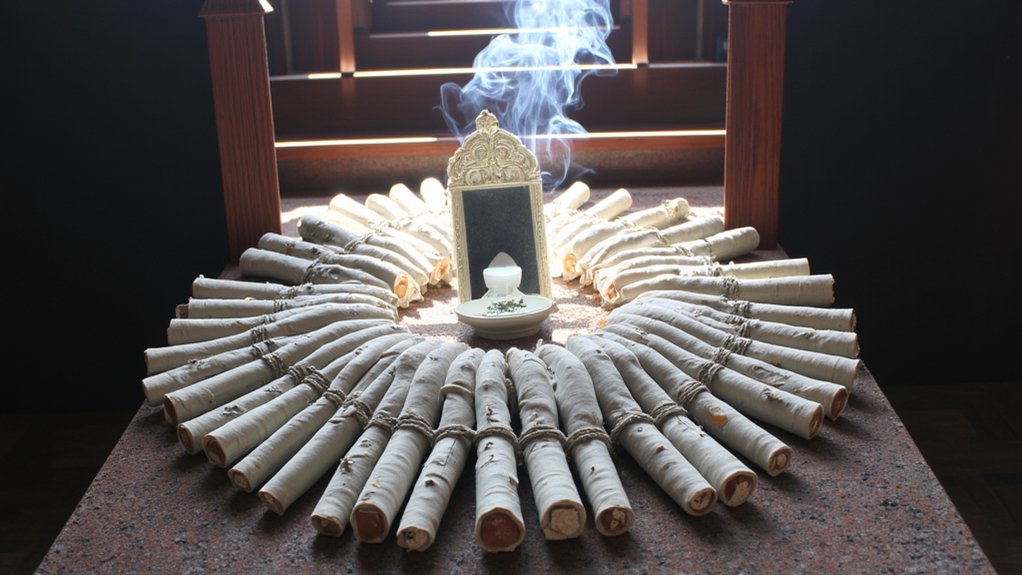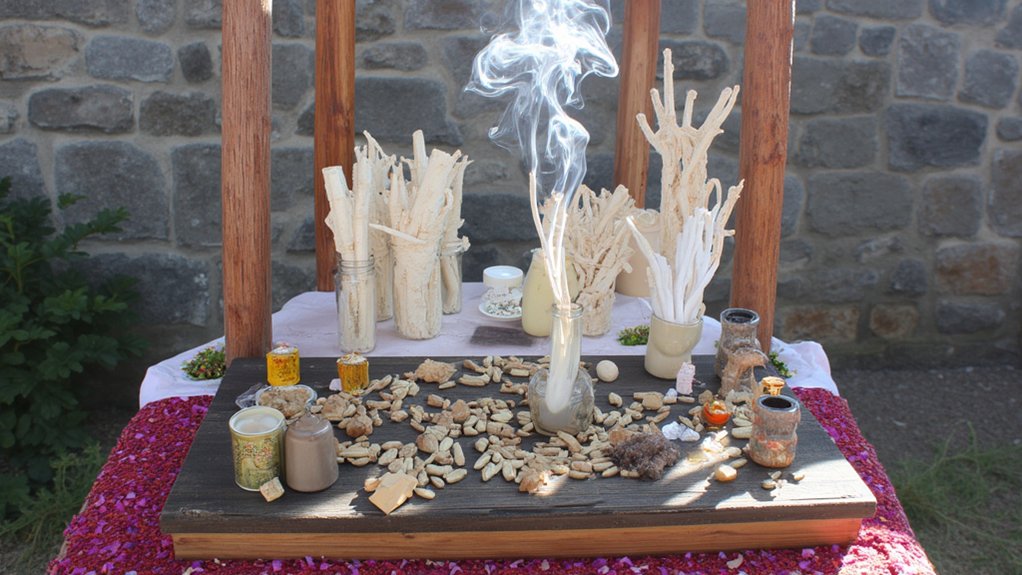You’ll find that plants have played a fascinating role in spiritual protection across cultures for thousands of years. From the humble garlic clove hung above doorways in medieval Europe to sacred lotus flowers in ancient Egyptian temples, these botanical guardians served both practical and mystical purposes. The intersection between a plant’s natural defensive properties and its spiritual significance offers intriguing clues about why our ancestors trusted certain species to keep evil at bay.
Contents
- 1 Ancient Origins of Plant-Based Protection Rituals
- 2 Sacred Plants in Religious and Spiritual Traditions
- 3 Common Protective Plants Across Different Cultures
- 4 Scientific Understanding Behind Traditional Plant Uses
- 5 Modern Applications of Protective Plant Practices
- 6 Cultural Impact and Preservation of Plant-Based Beliefs
Ancient Origins of Plant-Based Protection Rituals

Since the dawn of civilization, humans have turned to plants for spiritual protection against evil forces and negative energies. You’ll find evidence of these practices dating back over 5,000 years, with ancient Mesopotamians burning cedar and juniper to cleanse their temples.
In Egypt’s Old Kingdom period (2686-2181 BCE), you’d commonly see priests using sacred lotus flowers and myrrh in protection rituals. The Babylonians relied on garlic and onions, hanging them by doorways. Meanwhile, Celtic druids crafted protective charms from mistletoe and oak, believing these plants channeled divine energy that could shield their communities from malevolent spirits.
Sacred Plants in Religious and Spiritual Traditions

Throughout major world religions and spiritual practices, you’ll discover certain plants hold deep symbolic meaning and sacred power. In Christianity, olive branches symbolize peace, while frankincense and myrrh carry profound ceremonial significance. Buddhism reveres the sacred lotus, which represents enlightenment rising from muddy waters.
You’ll find sage burning in Native American purification rituals, and Hindu traditions incorporate holy basil (tulsi) into daily worship. In Pagan practices, oak trees serve as gathering places for spiritual ceremonies, while Celtic druids considered mistletoe a divine plant that connects heaven and earth.
Islamic traditions respect the date palm as a blessed tree, mentioned frequently in religious texts.
Common Protective Plants Across Different Cultures

Despite their geographical differences, many cultures share similar beliefs about plants that offer spiritual protection. You’ll find sage burning in both Native American ceremonies and European folk practices, while garlic appears in protective traditions from Asia to Eastern Europe.
Salt cedar and rosemary have been used for centuries across Mediterranean regions to guard homes, and you’ll spot protective bamboo in both Chinese and Japanese households. In India and parts of Africa, holy basil (tulsi) serves as a spiritual guardian.
Cedar, juniper, and pine needles are common protective elements you’ll encounter in Northern European, Native American, and Asian spiritual practices.
Scientific Understanding Behind Traditional Plant Uses
Modern scientific research has begun to validate many traditional beliefs about protective plants. You’ll find that plants like sage, garlic, and rosemary contain powerful antimicrobial compounds that naturally repel insects and harmful microorganisms.
What your ancestors understood intuitively, we can now explain through chemistry. The essential oils in these plants, particularly thujone in sage and allicin in garlic, create protective barriers through their volatile organic compounds. When you burn sage, for instance, you’re releasing these compounds into the air, where they can reduce airborne bacteria by up to 94%.
Through these mechanisms, traditionally “protective” plants do create cleaner, safer spaces.
Modern Applications of Protective Plant Practices
As ancient plant protection practices evolve into the 21st century, you’ll find innovative ways to incorporate these time-tested methods into your daily life. Modern homeowners often plant lavender and rosemary borders around their property’s perimeter, while urban apartment dwellers create protective windowsill gardens with small pots of sage and sweetgrass.
You can integrate these traditional practices into your home’s design by hanging dried bundles of protective herbs like mugwort or juniper near entryways, or placing potted aloe vera plants in your workspace. Many contemporary feng shui consultants now recommend specific plant placements that merge ancient wisdom with modern interior design principles.
Cultural Impact and Preservation of Plant-Based Beliefs
Through generations of storytelling and practice, traditional plant-based beliefs have shaped cultural identities worldwide. You’ll find these customs woven into ceremonies, architecture, and daily rituals across diverse communities, from placing rosemary on doorsteps to hanging garlic braids in kitchens.
Today, you can observe how these ancient practices continue evolving. In many Asian households, bamboo plants still occupy strategic locations, while Native American traditions preserve the ritual burning of sage, which dates back over 2,000 years. Modern botanical gardens and cultural centers now document these practices, ensuring they’re preserved for future generations to study and understand.
